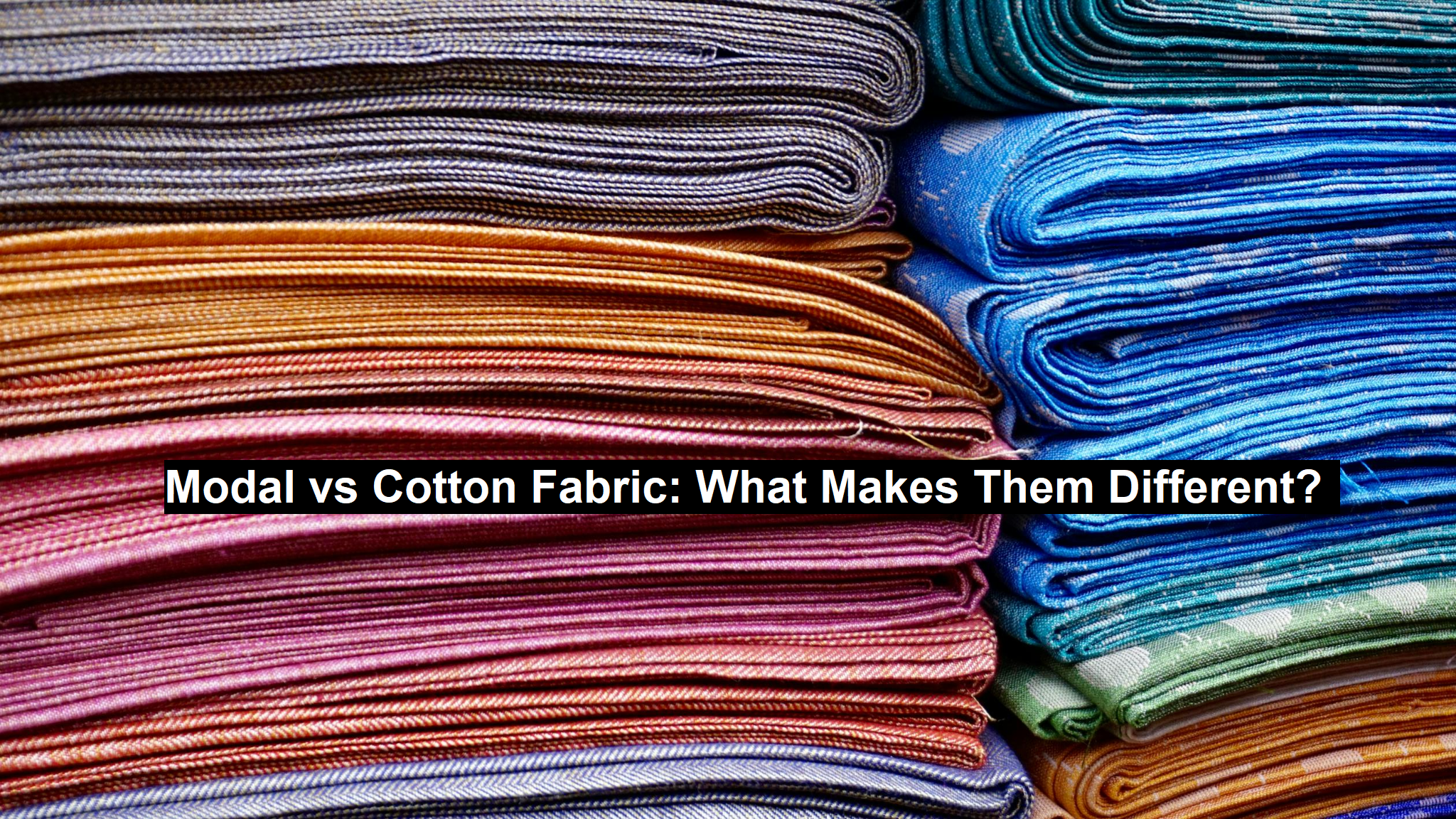Whether you are interested in different fabrics for skin purposes or as part of your new line research, it’s key to know the fabric properties of each and figure out the underlying difference beyond the look and feel of them, especially when these look so similar to the naked eye. So we have put together the facts in hopes this guides your next purchase decision for the fabric that you want.
Modal fabric is known for its natural stretchability, being very water-absorbant and being extremely breathable. While cotton is known for its soft feel, breathability, durability and quality. While these are very slight differences, let’s get to know these fabrics a bit better.
Modal Fabric
Modal fabric is commonly produced from recycled materials such as cellulose fibres. If you aren’t familiar with this type of fibre, it’s what you would find on beech and birch trees. Therefore, it’s naturally sourced material and in no which way has a negative impact on these trees.
The production process of modal fabric includes a blend with synthetic fibres that needs advanced technologies to create this unique type of fabric. This unique blend is what people and large companies like. While it’s not as breathable as cotton, it’s the perfect fabric for summer due to its capacity to absorb moisture much better. So this fabric is an essential option for items such as underwear, hijabs, headwear, t-shirts and so much more.
Modal fabric is also notoriously known for its softness, which makes it a desirable choice on first interaction.
Read: How Interior Design Can Improve Your Sleep
Cotton Fabric
Cotton is a fibre that we are all extremely familiar with and you could ask almost anyone and you would be aware that cotton is harvested from cotton plants. This naturally spruced material then goes through two processes. First, the raw cotton goes through a spinning process when it’s turning into threads; you can do this by hand even but it’s largely done through machines in large production. The second process is called weaving, which is when the thread itself is woven into fabric.
This fabric has a long history, is widely used, and will likely be a fabric we use for the rest of our human existence. It’s a popular choice will all products beyond clothing, including homeware and decor pieces.
What’s Different About Them?
Similarities
Before diving into the differences, let’s delve into what makes these fabrics so similar to one another.
Natural Origin
It’s nice to know that both of these fabrics come from natural origin, one being its very own plant and the other derived from trees. This makes its extremity accessible and can only further improve the environment with cotton and tree farms in place.
Breathability
Due to their natural origins, these fabrics are both pleasant on the skin. Breathable fabrics mean we are much more comfortable wearing them and allow our skin to remain united and cared for.
Softness
Another perk for our skin is that these fabrics are both extremely comfortable and soft to the touch. Due to its natural background, it makes only perfect sense that it’s pleasant on our skin.
Versatility & Durability
Both these fabrics are famously used in combination with others due to their durability; they blend easily with other synthetic fabrics such as nylon, elastane, polyester and so forth, which is a very popular choice for most large-volume fashion companies. This means these fibres can be extremely versatile, from clothing to homeware and way beyond.
Differences
Water Absorption
We have mentioned this key difference a few times. Overall, while they are both absorbent, the modal fabric is 50% more absorbent compared to cotton, which is a rather large difference. Absorption is an extremely important feature for products with specific uses so such as performance wear, you would like your products to be a combination of absorbent and breathable and this is why modal fabric is the perfect choice when combining it with other popular performance pieces.
This is why model fabric in pieces such as headwear, underwear and performance is much better than cotton.
Popularity
Cotton is a very well-known and popular fabric of choice, and it just even sounds better if you were a brand and wanted to be 100% natural. You would pick cotton over modal based on this reason. Cotton pyjamas, bedding, and underwear are all still very well sought after and seen as more luxurious compared to fabric blends and so forth.
Cotton is a durable and still cost-effective choice, still comfy like modal and still a solid choice so it makes complete sense why this fibre as a whole is much more popular than modal. While I have been seeing some representation of modal, it’s nowhere near the extent to which cotton is used. You could likely check the item of clothing you are wearing now, and it will have cotton in it. The popularity of this product is no comparison to any other fabric.
Final Thoughts
There are some fundamental differences and similarities between these two fabrics and I would strongly recommend that you focus on the type of clothing you want to be made up from these products. For example, the likes of everyday cotton would suffice as a breathable and natural product and kind to your skin, so the likes of t-shirts, hijabs and socks would be great.





